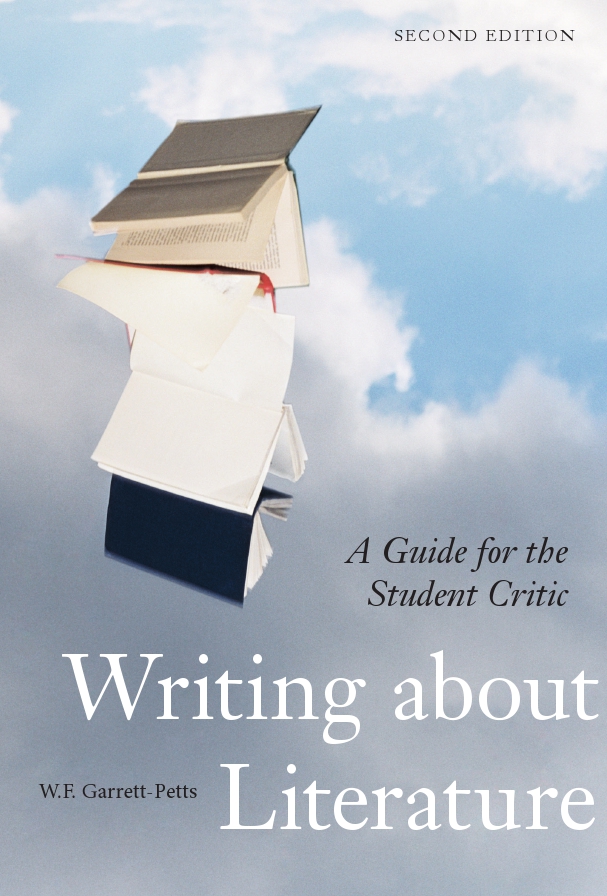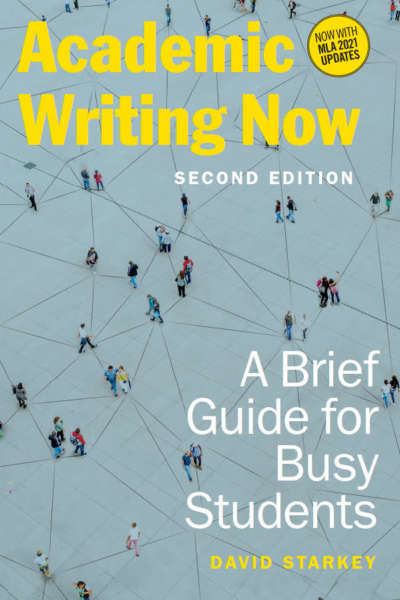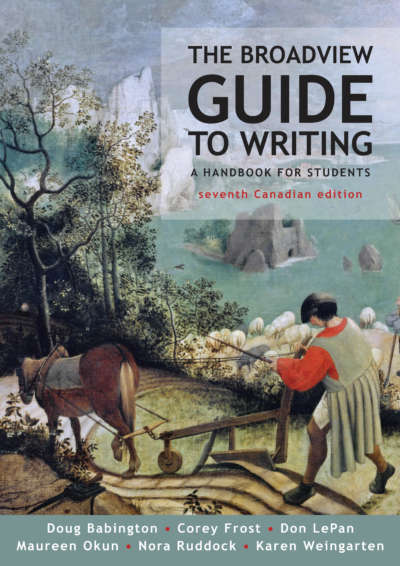Writing about Literature introduces students to critical reading and writing through a thorough and engaging discussion of the field, but also through exercises, interviews, exemplary student and scholarly essays, and visual material. It offers students an insider’s guide to the language, issues, approaches, styles, assumptions, and traditions that inform the writing of successful critical essays, and aims to make student writers a part of the world of professional literary criticism.
Much of the discussion is structured around ways to analyze and respond to a single work, Stephen Crane’s story “The Bride Comes to Yellow Sky.” This second edition is updated throughout and includes a new chapter on “Reading and Writing About Poetry”; the chapter uses Robert Kroetsch’s poem “This Part of the Country” as the unit of analysis and includes an interview with the poet about his process.
Comments
“I have used Writing about Literature a number of times to great success. As it progressively takes students from being uninformed readers of a literary text to becoming engaged critics in conversation with advanced scholars, it provides an invaluable framework for introducing students to the fundamental goals and techniques of critical writing, the kinds of issues that critics explore and evidence that they use, strategies for presenting and organizing critical arguments, and the necessity of revision in the writing of criticism. This new edition’s section on writing about poetry will certainly broaden the appeal of the book to students and instructors.” — Paul C. Jones, Ohio University
“Covering topics from close reading to theory, and from visually mapping drafts to final revisions, this book is ideal for introductory courses in literature or composition. But Writing about Literature does more than serve as a guide for students seeking to become careful readers and clear writers: it teaches them how to be students at university and scholars in the field. The addition of poetry in the second edition widens the scope of the book in terms of genre and methodologies, while it retains the deep conceptional framework of the first.” — Emily Kugler, Colby College
Praise for the first edition:
“For every student who has stared hopelessly at a blank screen, waiting for a literary essay miraculously to appear; and for every instructor who has looked upon a set of just-graded student essays with a sense of failure verging on despair—this book offers immediate help.” — Andrea Lunsford, Stanford University
Acknowledgements
Preface to the Second Edition—to the Instructor
- Initiating Students into Literary Study
A Brief History of English Studies
This Book’s Form and Philosophy
Preface to the Second Edition—to the Student: An Introduction to the Critical Conversation
- What Is Academic Discourse?
A Method for Learning Academic Discourse
How to Use This Book
CHAPTER 1
Getting Started: From Personal Response to Field Stance
- Overview
Writing Is Rhetorical
Documenting Your Personal Response
How to Use Your Personal Response
Box 1.1: Field Notes from Critical Theory and
Psycholinguistics: “How We Read”
Becoming a Literacy Researcher
New Contexts for Reading and Writing
- The Social Stance
The Institutional Stance
The Textual Stance
-
Box 1.2: Field Notes from Composition Studies: The Five-Paragraph Theme
- Summary: Why It Is so Important to Become Aware of All Four Stances
Box 1.3: Field Notes from Linguistics: The Effect of Context on Reading
An Interview with a Literary Critic
Exercises
CHAPTER 2
Reading and Responding to Stephen Crane’s “The Bride Comes
to Yellow Sky”
- Overview
Response Notes
The Critical Conversation
Box 2.1: Field Notes from Literary Criticism: How Readers Have Responded to Crane’s “The Bride Comes to Yellow Sky”
“Fielding” Some Questions
Exercises
CHAPTER 3
Writing the Critical Essay: Form and the Critical Process
- Overview
Form
Box 3.1: Field Notes from the Visual Arts: Visual Mapping Exercises
How to Move from an “F” to an “A”: Modelling the Process
- Writing and Rewriting
Commentary
- The Six Common Places of Literary Criticism
- Contemptus Mundi and Complexity
Appearance/Reality
Everywhereness
Paradigm
Paradox
-
Critical Approaches
- Formalism: New Criticism and Deconstruction
Reader-Response Criticism
Cultural Criticism
- Finding a Place for Your Interpretation in the Critical
Conversation
Exercises
CHAPTER 4
Model Essays
- Student Essays
- Michelle Demers
Ryan Miller
Lydia Marston
-
Professional Essays
- Alice Farley
Katherine Sutherland
Harold H. Kolb, Jr.
- Exercises
CHAPTER 5
Reading and Writing about Poetry
- Overview
Some Opening Thoughts about Poetry
- “Poetry Should Not Mean / But Be”
- Reading a Poem
- “This Part of the Country”
Entering into the Poem
- An Interview with a Poet
Exercises
A Critical Tool Kit for Writing about Poetry
- Caedmon’s Hymn
Box 5.1: Field Notes from a Literary Critic: Anglo-Saxon
Accentual Meter
- Re-entering into the Poem
- Parts of a Poem
Types of Feet
Types of Rhythm
Types of Rhyme
Types of Poetic Device
- Integrating Quotations
How to Move from an “F” to an “A”: Modelling the
Process
- Box 5.2: Field Notes from a Writing Teacher: Thirteen Ways of
Thinking about a Poem
Complete Texts for the Poems Referenced in This Chapter
-
“Sonnet 116”
“A Valediction Forbidding Mourning”
“On His Blindness”
“To His Coy Mistress”
“Ode on a Grecian Urn”
“My Last Duchess”
“Come Down, O Maid”
“O Captain! My Captain!”
CHAPTER 6
Some Final Words on Writing about Literature
- Four Critics Speak on Their Personal Approaches to Critical Writing
- Alice Farley
Katherine Sutherland
Michael Jarrett
Helen Gilbert
Appendix: Language Use in English Studies
Resources for Further Study
Works Cited
Index
W.F. Garrett-Petts is Professor of English at Thompson Rivers University, Kamloops, British Columbia.
The instructor’s site includes handouts, transparencies, discussion questions, comments on the text by chapter, recommended readings, and two sample syllabi for instructors to use in their course. An access code to the website is included with all examination copies.
For a sample from chapter 1 of Writing About Literature, click here. (Opens as a PDF.)
— Encourages students to think of their own writing as fledgling works of professional literary criticism; as ways of engaging with academics in the field at large
— Includes exercises, writing prompts, interviews with scholars, and visual material
— Offers students an insider’s guide to the language, issues, approaches, styles, assumptions, and traditions that inform the writing of successful critical essays
— Presents specific examples of both student writing and professional academic writing, showing how to polish an essay from an “F” to an “A”
— Much of the discussion is structured around ways to analyze and respond to a single work, Stephen Crane’s short story “The Bride Comes to Yellow Sky”
— Includes a new chapter on reading and writing about poetry







